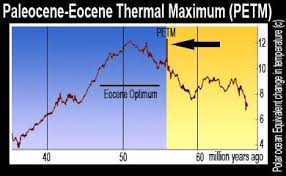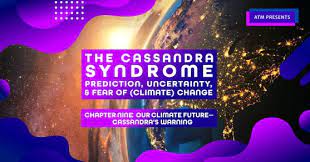 I yesterday ended my posting with:
I yesterday ended my posting with:
Thus, all three points of view by Hanson, Horning and Mikiluna are wonderful and necessary, but hardly sufficient for real action. What is the solution? The FIRE, which will come. Anything better? Sure, the world truly committing to do something about climate warming. Will this occur. I think not. So what? The FIRE, a global crisis somewhat evocative of the James Baldwin's warning. Hope I'm wrong.
Then we are more and more learning that the leaders of some countries will not even bother showing up in Glasgow for the climate change talks.
- Chinese President Xi Jinping will not attend the COP26 summit. He went to the Paris Agreement session.
- For a while Australian Prime Minister Scott Morrison also wasn't planning to come. However, while he now is going, he indicated that he might not be able to agree to anything because his country has not been able to come up with a position.
- President Joe Biden will show up, but his appearance is also meaningless because the U.S. Senate will not agree to anything. Turns out the agreement framework of 1992 will be good enough for the United Nations, but a real budget will need Senate accord.
- Not sure if even Greta Thunberg will be there.
What is lacking is urgency and significance. Perhaps I can suggest a fix. Can the Venus Syndrome scare decision-makers into doing the right thing? Could
fear be the solution to global warming?
But is it ethical to resort to such a devious tactic? While the probability of something like The Venus Syndrome might be tiny, if everything indicated is based on science, it might be possible.
So today I'm resurrecting a two-part
Huffington Post series I published a decade ago. I will let you read
Part One. Here is a slightly modified version of
Part Two, with some added graphics:
Yesterday, Part One reported on the science and politics of global warming. Today, we enter the realm of the unknown, the future. Remember now, there could be twice as much energy content in methane trapped at the bottom of the ocean than all the known coal, oil and natural gas deposits.
What happens to gas and ice in water? Well, the latter floats to the surface and they both enter the atmosphere. What if a combination of circumstances jiggles all the marine methane hydrates to the surface? You can add Arctic tundra to this mix, as it, too, is full of methane, and already melting. What if there is a worst case scenario of coincidences? Such is my tale from the future--THE VENUS SYNDROME:
October 21, 2022, was a bad day for Planet Earth, in fact, the worst day ever for Homo sapiens since Mt. Toba erupted 75,000 years ago, dropping our human population to 15,000 or so. The temperature had finally reached 110°F in Washington, D.C., breaking the record set last year by 2°F. And so late in the year, too! But the temperature itself was not the problem; it was more the accumulation of the past three years being the hottest for the entire globe. Global climate warming was not only happening, but getting worse.
Hurricane Valerie was storming to the District. Only three Category 5 hurricanes have hit the U.S. Mainland (Camille in 1969, Andrew in 1992 and Igor in 2010) in the fifty years prior to this, but already three have struck this year (Debby in May and Tony last month). However, Hurricane William, churning in the Gulf of Mexico, and seeking New Orleans, has the lowest minimum pressure ever of 878 mb (millibars, with the previous low being an unnamed 1935 hurricane at 892 mb), with sustained winds of up to 200 miles per hour. The Army Corps of Engineers warned that the upgraded dikes could withstand a Category 3, which was the strength of Hurricane Katrina, but a super hurricane is something else, so only the worst is anticipated.
Of particular concern to scientists, though, is that the thermohaline circulation might have stopped today. These currents kept certain coastal regions cool and others warm. They also helped maintain the marine methane hydrate (MMH) deposits below critical temperature. Expected now a steep increase in ocean temperatures in many of those shelf areas heavy in MMH deposits can be anticipated.
Both the north terrestrial and magnetic North Poles have been over water for the past couple of months, with the seafloor 13,000 feet (4000 meters) below. Normally, only half the ice melts. As of today, there is no ice in the Arctic around the poles.
The Intergovernmental Panel on Climate Change (IPCC) met last month in an emergency session to declare that the permafrost of the U.S., Canada and Russia is, indeed, melting, and the 10.4°F (5.8°C) temperature rise by 2100 will now occur by 2025. The International Arctic Research Center (IARC) of the University of Alaska at Fairbanks reported that the northern ecosystem holds one fourth to one third the world's soil carbon, and much of it is carbon dioxide and methane trapped in the ice. Over the past 200 years, the atmospheric concentration of methane has tripled. Now, this ice is thawing with the deeper solid turning into slush, and, the expectation is that the effect of methane on global climate warming will in a few years exceed that of carbon dioxide. A 2°C increase in permafrost temperature amplifies methane flux by 120%, and there is a real danger that taliks, or thawed permafrost, are disintegrating, to further accelerate the effect.
The IARC also will soon release the results of a joint Russia-U.S. cruise investigating methane plumes found in the East-Siberian Sea. The speculation is that methane gas hydrates are melting at the bottom of the sea. As there is one million times more natural gas (methane) in these permafrost reservoirs than the normal methane annually released from the northern ecosystem, the implications are frightening.
Twenty years ago (Alaskan Science Forum, January 3, 2001, Article #1523 by Ned Rozell), it was reported that 50% of Russia and Canada, 80% of Alaska, 20% of China and all of Antarctica is underlain by permafrost. In northern Siberia this permafrost is 1,600 meters (5,250 feet, or a mile) thick. A decade ago, this permafrost had warmed to within one degree Celsius of thawing in Alaska. Major melting was expected by 2040. It is occurring now.
The global system then even further positively reacts by melting the permafrost, contributing more carbon dioxide and a lot more methane into the atmosphere, which speeds up the process. Even an idiot would be able to determine that this cascading effect is not a smart thing to foster.
All this heat finally resulted in portions of the ocean going hyper-critical with respect to temperature, and the danger point for runaway water vapor was finally exceeded on this October day in 2012. Water vapor, as prevalent as it is, has not in the past been considered as a danger, mostly because there is so much of it and there is nothing we can do about it anyway. Suddenly, this is a major issue. But that in itself was not the trigger, for it should have taken many millennia to get to anything like the Venus Syndrome.
The problem was that this critical condition occurred over portions of the warmer Pacific, which sat over huge deposits of marine methane hydrates (MMH). It was purely coincidental, but in the Ring of Fire, at a spot off Peru, a major subsea earthquake rated at 8.9, triggered a massive underwater volcanic eruption, which served as a fuse to destabilize the hydrates, beginning the release of copious amounts of methane into the atmosphere. A major tsunami is expected to hit the Pacific Rim, but that has now become a minor irritant. A sizable MMH deposit off Guatemala, possibly catalyzed by a related earthquake, also went metastable. Unexpectedly, there was a huge reservoir of methane gas below the clathrates that just came to the surface.
Thus, in a matter of 24 hours, Planet Earth had its hottest day in modern history, a sudden influx of methane from the ocean, and an atmosphere where methane superseded carbon dioxide as the primary agent for global warming. We're not quite sure how this excess water vapor was affecting the process, but it can only be bad. The Great Ocean Conveyor Belt stoppage in five locations was particularly ominous, for the ocean surrounding these MMH beds would further warm.
It had to take the Global Warming equivalent of a Perfect Storm to catalyze an expedited Venus Syndrome: portions of the ocean surface at critical positive feedback temperature; cessation of the cooling currents thus warming the marine methane hydrate (MMH) deposits; a major subsea earthquake combined with a cataclysmic undersea volcanic eruption; resultant tsunami which slightly lowered the sea level over the MMH deposits near the coastlines; and, most importantly, crossing over of the dynamic equilibrium pressure-temperature condition allowing marine methane to explode to the surface. Yes, and that troublesome water vapor influx.
Scientists at the International Marine Methane Hydrates Research Institute at the University of Hawaii calculated that one teraton, a million times a million, of methane will be released into the atmosphere over the next year or two. The early Eocene, 55 million years ago, experienced a similar event, resulting in a temperature rise of about 16 degrees Fahrenheit across the now populated regions of the world.
An emergency session of the United Nations, panicked by these developments, was called for this 21st day of October with a wary eye on Valerie. Members of the IPCC were summoned to participate. Computer models over the past week were refined for the most probable case scenario, and the terminal report was presented to the General Assembly at 10AM that fateful Monday. New York City, badly enough, was already at 102°F that morning, with a dangerous hurricane approaching, but that all palled to the devastating news.
The chairman of the IPCC reported that we had reached and tripped over the tipping point. THE VENUS SYNDROME had begun, and, now, could probably not be stopped. Humanity at large, and most of life, would cease to exist within a century, providing a short period to develop solutions for survival, the only rational one being to leave Planet Earth, although emergency efforts are being planned to release air pollution particulates and sulfate aerosols into the atmosphere. Fortunately enough, the Search for Extraterrestrial Intelligence (see Simple Solutions for Humanity in box on the right) project, headed by a non government organization, had recently detected signals from an apparently advanced civilization in the Orion constellation. The data is being interpreted and....
A long time ago, according to Greek mythology, there was a very beautiful princess of Troy by the name of Cassandra. Her younger brother Paris was the character who kidnapped Helen, the wife of the King of Sparta, and brought her to Troy. Apollo, son of Zeus, fell in love with Cassandra and gave her the power to know the future if only she were to marry him. She was given that power, but refused to marry him, so Apollo put a curse on her predictive capabilities, and doomed her to despair, for while her powers remained, no one would believe her.
Sometimes I feel that I have Cassandra's curse. Who knows? Look for The Venus Syndrome: the Novel, soon to come.
But not to fear, for while humanity might be sacrificed, Planet Earth will survive, find a way to re-gain balance, unlike Venus, and dedicate another 5 billion or so years to re-initiate life, about the time it took to produce us. But what are the odds?_________________________________________________Patrick Takahashi is a former special assistant in the U.S. Senate, professor of engineering and emeritus director of the Hawaii Natural Energy Institute at the University of Hawaii.
A few months later I wrote another HuffPo:
The Venus Syndrome Revisited. Very recently I possibly thought of a solution to the Venus Syndrome, linked to the rise of the Blue Revolution. Someday I'll write that book, which of course will be a best seller, leading to a blockbuster movie to scare decision-makers. Pleading and demanding are not working. Maybe fear can be that solution.
-


























Comments
Post a Comment